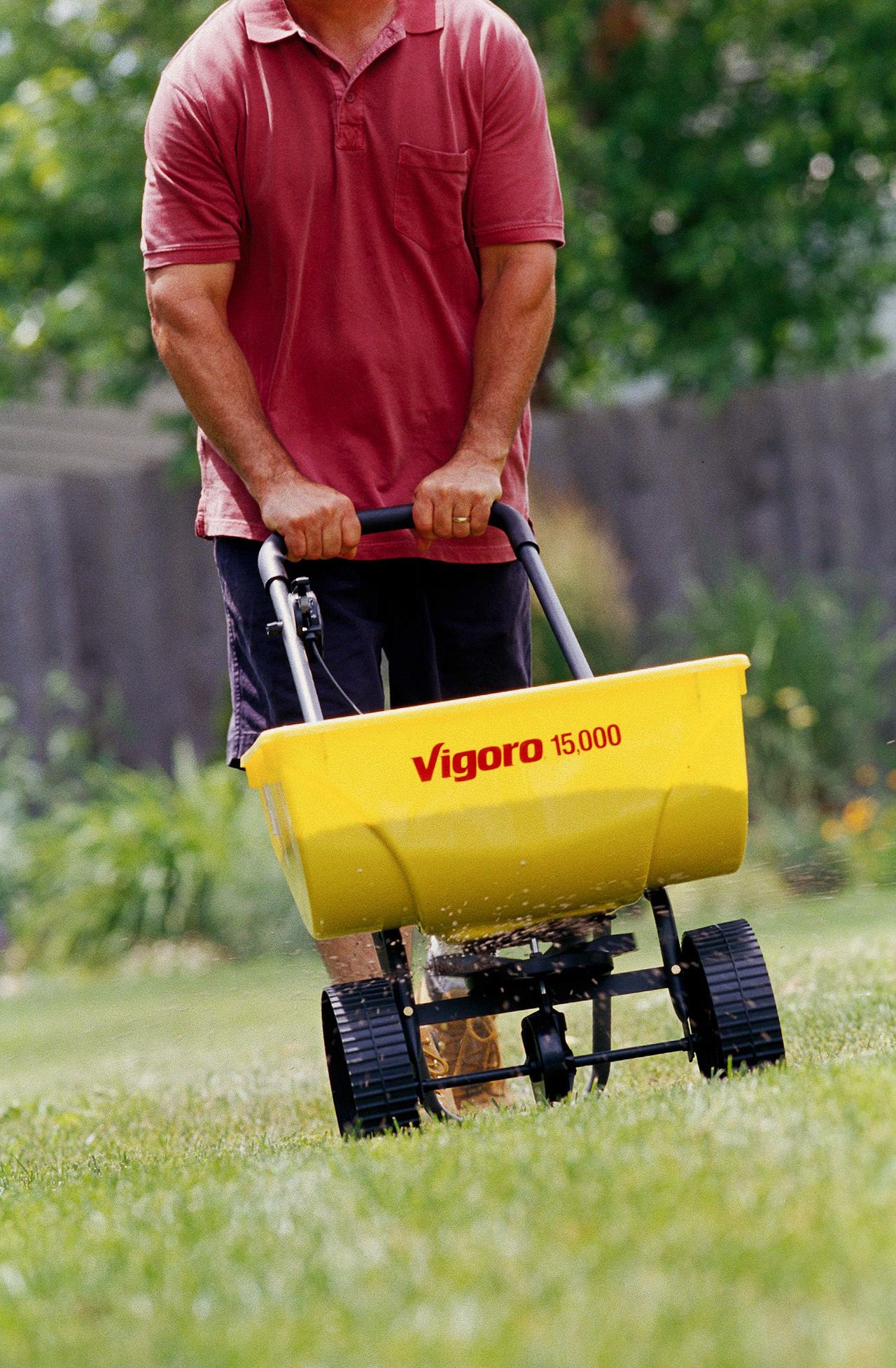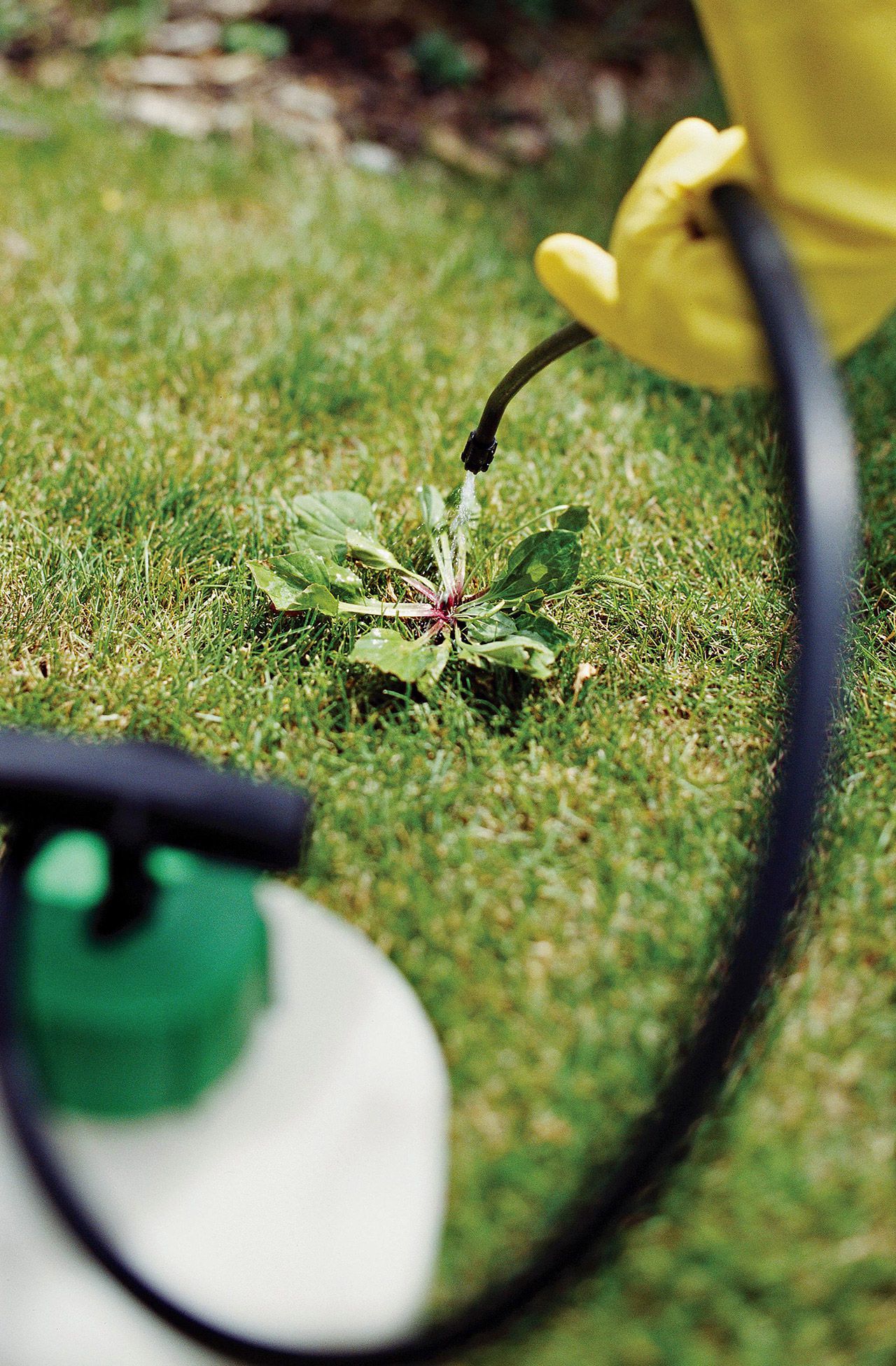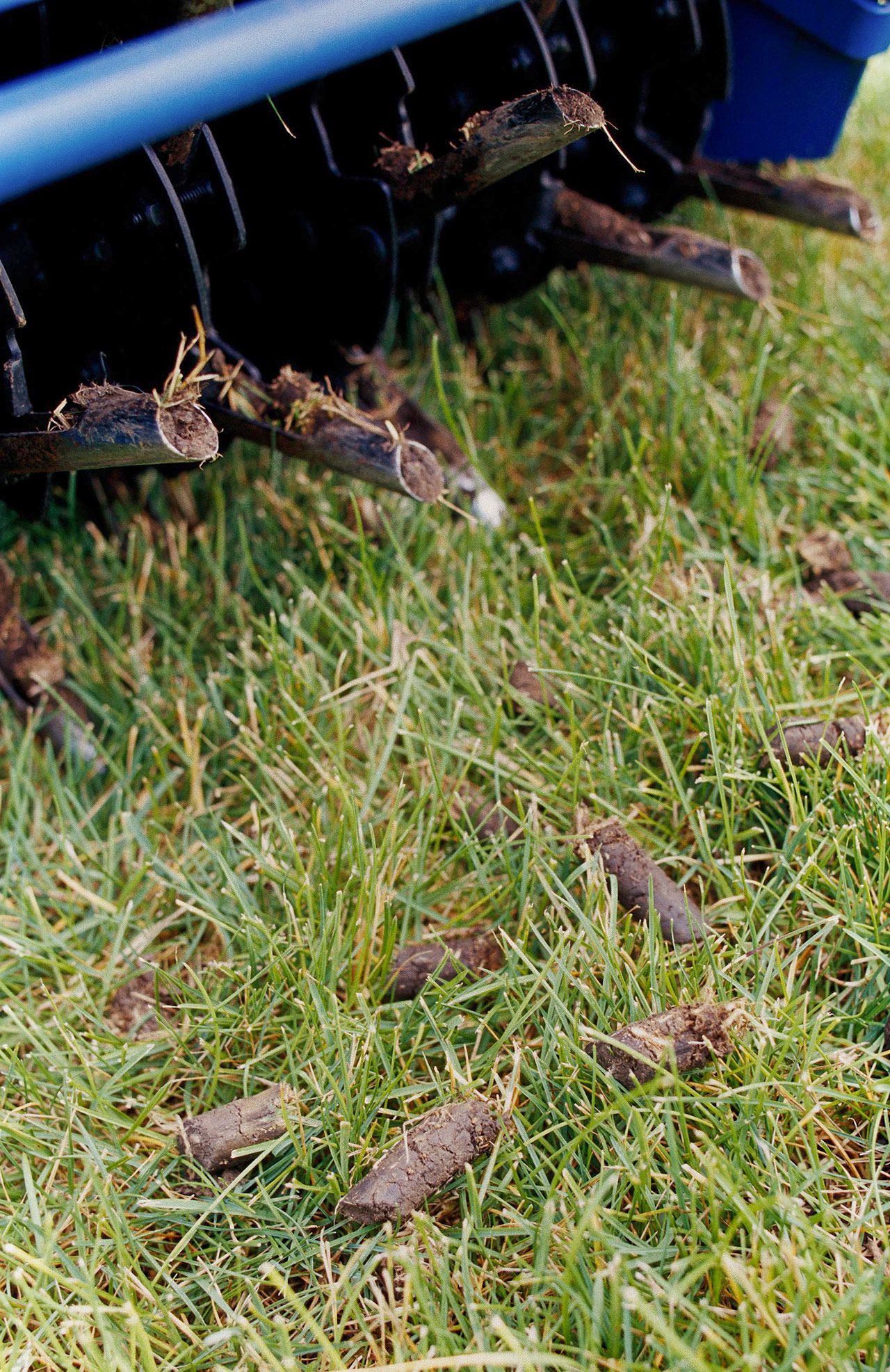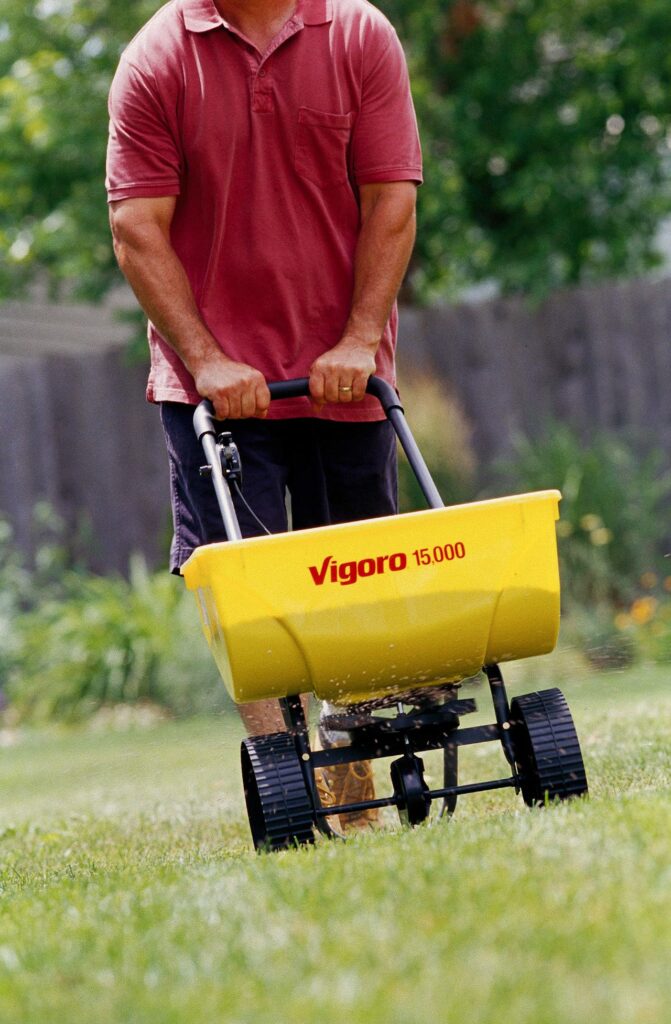In the realm of lawn maintenance, achieving a lush, verdant expanse is as much about avoiding certain pitfalls as it is about meticulous care and nurturing. “Mistakes in Lawn Care: Timing Fertilization and Watering” highlights critical timing errors that can undermine the health and appearance of your lawn, from the misapplication of weed and feed products to incorrect watering schedules. Whether it’s applying granular treatments on a dewy morning for maximum adherence, fertilizing at the optimal season to promote vigorous growth, or ensuring the lawn is aerated when conditions allow for the greatest benefit, this article elucidates common missteps that can easily be rectified. By adjusting the timing of your lawn care rituals—be it through proper fertilization, watering, mowing frequency, or weed prevention—you can enhance the efficacy of your efforts and enjoy a more thriving outdoor space.

This image is property of www.bhg.com.
Not Timing Weed and Feed Application Right
When it comes to maintaining a lush and healthy lawn, the timing of applying weed and feed products is crucial. These granular products are designed for broadleaf weed control and should ideally be applied on dewy mornings.
Importance of morning application on dewy grass
The reason behind this is quite straightforward. The moisture from dew helps the granules of the product stick to the leaves of the weeds. This simple mechanism significantly increases the effectiveness of the weed control.
Effectiveness related to moisture helping granules adhere to leaves
When the granules adhere well to the leaves, the active ingredients are more likely to be absorbed by the weed, leading to a more effective kill rate. Without this moisture, granules may fall to the ground without ever coming into contact with the target weeds.
Best practices for applying granular weed-and-feed products
To maximize the efficacy of these products, ensure your lawn is evenly covered and that application is aimed precisely where the weeds are most prevalent. Follow the manufacturer’s guidance on spreader settings and application rates for the best results.
Applying Weed Preventers Too Late
Timing is everything, especially when it comes to applying pre-emergent herbicides to your lawn.
Ideal timing for pre-emergent herbicides
The ideal time is early in the growing season, as these herbicides work by preventing weed seeds from germinating. If you wait too long, the weeds will have already sprouted, rendering pre-emergents ineffective.
The role of forsythia blooms in timing
A handy natural indicator for the perfect timing is the forsythia plant. When its yellow blooms drop, it is time to apply pre-emergent herbicides. This typically coincides with soil temperatures reaching about 55 degrees Fahrenheit, which is prime germination time for many common weeds like crabgrass.
Consequences of late application on weed control
Applying weed preventers late can allow weeds to gain a foothold in your lawn, making control much more difficult later in the season. Consistency and timely application are key components in effective lawn weed management strategies.
Incorrect Fertilization Timing
Fertilizing your lawn is more nuanced than simply spreading fertilizer at any given time.
Optimal seasons for fertilizing cool-season vs. warm-season grasses
For cool-season grasses, the optimal times for fertilization are in the fall and spring. These types of grasses thrive in cooler temperatures and benefit significantly from a late fall feeding. Warm-season grasses, conversely, should be fertilized in late spring and through the summer months when they are most actively growing.
The benefits of late fall feeding for cool-season grasses
Late fall feeding strengthens the roots of cool-season grasses and provides them with the necessary nutrients to survive the winter months. This practice can help ensure a lush, green lawn come spring.
Common timing mistakes and their impact on lawn health
Applying fertilizer at the wrong times can lead to a host of problems, including weakened root systems, susceptibility to pests and diseases, and nutrient runoff that can harm the environment. Adhering to the recommended timing for your specific type of grass is crucial for maintaining a healthy lawn.
Improper Lawn Aeration Timing
Lawn aeration is a vital part of lawn care that involves perforating the soil to allow air, water, and nutrients to penetrate the grass roots.
The best conditions for lawn aeration
The best time to aerate your lawn is during its peak growing period when the grass can heal and fill in any open areas after soil plugs are removed. For cool-season grasses, this means early spring or fall, and for warm-season grasses, late spring through early summer.
Why aerating dry, hard soil is ineffective
Aerating dry, hard soil is often futile since the aeration equipment cannot penetrate the soil effectively. This results in a less effective aeration process and can even damage the equipment or your lawn.
How proper timing affects aeration outcomes
Proper timing ensures that the soil is adequately moist and that the grass is in its active growth phase, which is optimal for root development and nutrient uptake post-aeration.

This image is property of www.bhg.com.
Watering Late in the Day
Watering your lawn may seem straightforward, but the timing of watering can significantly affect the health of your lawn.
Why morning is the best time for lawn watering
Watering in the morning allows the water to soak deep into the soil, reaching the roots while ensuring that the excess water evaporates during the day. This timing reduces the likelihood of water waste through evaporation and ensures the grass has access to water during the hottest parts of the day.
Risks associated with late day or nighttime watering
Watering late in the day or at night increases the risk of diseases because the water sits on the grass blades for prolonged periods. This moist environment is conducive to the growth of fungi and other lawn diseases.
How correct watering timing can prevent disease and maximize efficiency
By watering your lawn in the early morning, you minimize disease risk and ensure that your watering is as efficient as possible. This simple change in timing can lead to a healthier, more resilient lawn.
Not Mowing Frequently Enough
Regular mowing is more than just a cosmetic task; it’s an integral part of maintaining a healthy lawn.
Adjusting mowing frequency based on growth rate
Your lawn’s growth rate will dictate how frequently you should mow. During peak growing seasons, you might need to mow more often to keep up with the rapid growth of your grass.
The one-third rule for healthy mowing practices
A general rule of thumb for mowing is never to remove more than a third of the grass blade’s length at any one time. This practice helps prevent stress on the grass and keeps your lawn looking lush and green.
Reducing pest habitats through regular mowing
Regular mowing also helps reduce habitats for pests, contributing to a healthier lawn environment where your grass can thrive without competition from unwanted insects or diseases.

This image is property of www.bhg.com.
Over-watering
Over-watering is a common mistake that can have detrimental effects on lawn health.
Signs of over-watered grass
Signs include waterlogged soil, thatch build-up, and yellowing grass. These symptoms indicate that your lawn is not getting the oxygen it needs due to excessive water.
Impact of excessive watering on lawn health
Over-watering can lead to shallow root systems, making your grass less drought-tolerant and more susceptible to disease. It can also encourage the growth of weeds that prefer moist conditions.
How to adjust watering schedules appropriately
To prevent over-watering, adjust your watering schedule based on the weather and the season. Your lawn needs less water in cooler months and more in hot, dry periods. Always aim for deep, infrequent waterings that encourage deep root growth.
Under-watering
Conversely, under-watering can stress your lawn and lead to a host of problems.
Recognizing symptoms of drought-stressed lawns
Symptoms include wilting, blue-gray coloration, and footprints that remain visible on the grass. These signs indicate that your lawn is desperately in need of water.
The importance of deep, infrequent waterings
Deep, infrequent waterings encourage the development of deep, strong roots that are essential for a healthy, drought-resistant lawn. Aim to water deeply enough that the moisture reaches at least 6 inches into the soil.
Balancing soil moisture for optimal grass health
Balancing soil moisture requires attentive monitoring of your lawn’s condition and adjusting your watering habits accordingly. This balance is critical for maintaining a lush, vibrant lawn throughout the growing season.

This image is property of www.bhg.com.
Using the Wrong Fertilizer Formula
Fertilization is not a one-size-fits-all task. Using the wrong fertilizer formula can significantly impact the health and appearance of your lawn.
NPK ratios and choosing the right fertilizer
The NPK ratio—nitrogen (N), phosphorus (P), and potassium (K)—on a fertilizer bag indicates the proportion of each nutrient in the formula. Choosing the right fertilizer for your lawn requires understanding its specific needs based on the soil type and grass species.
Seasonal fertilizer needs of different grass types
Different grass types have varying nutrient needs throughout the seasons. For instance, cool-season grasses may benefit from a fertilizer higher in nitrogen in the fall to prepare for winter, while warm-season grasses may need more potassium during hot summers to help with heat stress.
Consequences of using inappropriate fertilizers
Using the wrong type of fertilizer can lead to nutrient imbalances, which can weaken your lawn and make it more susceptible to disease, pests, and environmental stresses. It’s crucial to select a fertilizer that complements the specific needs of your lawn.
Neglecting Patchy and Bare Spots
Ignoring patchy and bare spots in your lawn can lead to larger problems down the line, including increased erosion and weed invasion.
Causes of patchy growth and bare spots in lawns
These issues can be caused by a variety of factors, including heavy foot traffic, pest damage, disease, and environmental stress. Identifying the cause is the first step in addressing these unsightly areas.
Overseeding and sodding strategies for repair
Overseeding is an effective way to fill in thin areas by spreading grass seed over existing turf. For larger bare spots, sodding may be necessary to establish grass quickly. Both methods require proper soil preparation and care to ensure successful establishment.
Routine maintenance to prevent recurrence of lawn issues
Preventing patchy and bare spots from recurring involves regular maintenance, such as proper mowing, watering, fertilization, and pest management. Monitoring your lawn’s health and addressing issues promptly can prevent minor problems from becoming major ones.
Source: https://www.bhg.com/gardening/yard/lawn-care/lawn-care-for-beginners/



